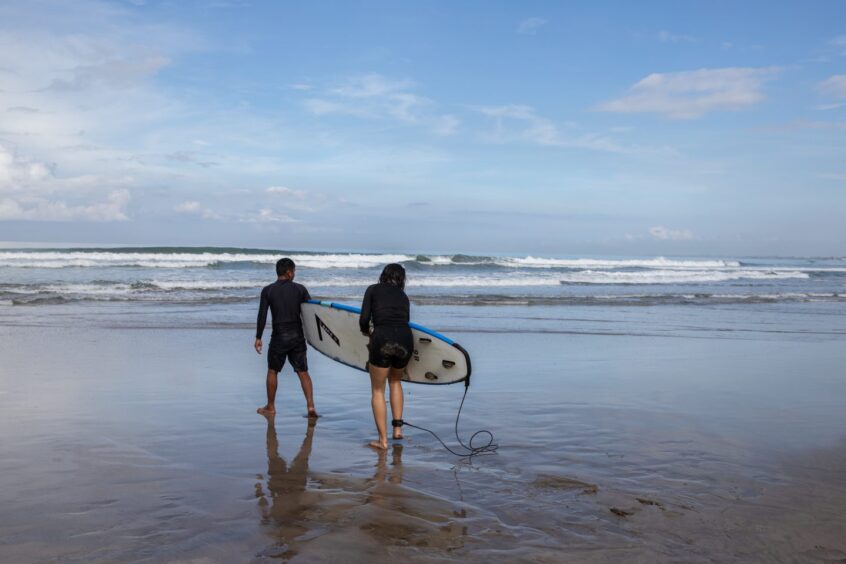
Here’s another reason to get stoked about surfing: Forests, marshes and mangroves adjacent to surf breaks store 88.3 million metric tons of carbon dioxide, according to a first-of-its kind study. That represents about 1% of annual global energy-related emissions, equivalent to the carbon spew of 77 million cars.
The type of carbon sequestered around surf breaks is significant, according to the peer-reviewed paper published Tuesday in the journal Conservation Science and Practice. Researchers call it “irrecoverable carbon,” meaning it could be released by development but would be impossible to re-sequester before the mid-century deadline to reach net-zero emissions and avoid the worst impacts of climate change.
“If you destroy these ecosystems, there’s no way that you could ever regrow the forest or restore the mangroves by 2050,” said Jacob Bukoski, the paper’s lead author and an assistant professor at Oregon State University. “So you can essentially consider that carbon as irrecoverable for climate mitigation purposes.”
The findings follow research by some of the same authors that showed a quarter of 3,755 surf breaks are within 5 kilometers (3 miles) of biodiversity hotspots. Other research found surf tourism generated as much as $65 billion annually before the pandemic.
“The protection of these surfing areas helps to achieve two of our most important conservation goals, both protecting biodiversity and keeping carbon in those soils, in those forests and in the mangroves,” said Scott Atkinson, a co-author of the paper and senior director of surf conservation at environmental group Conservation International.
Bukoski, who described himself as an occasional surfer, compared the benefits of preserving popular surf breaks to the knock-on effects of protecting the habitats of cherished wildlife like whales or polar bears. When so-called “umbrella species” thrive, so do a host of other animals that share their environment.
“These surf break are already beloved so I think that there’d probably be widespread support and interest in protecting the ecosystems surrounding them,” he said.
Scientists at Conservation International and other organizations had previously used computer modeling to create a global map of irrecoverable carbon stocks. Bukoski and his colleagues overlaid that data with the locations of 4,380 surf breaks in 113 countries.
They determined that an estimated 88.3 million metric tons of CO2 was stored within 1 kilometer inland of 3,602 surf spots globally. Around 20% of that carbon was found in significant but unprotected areas of biodiversity. Coastal ecosystems within 3 kilometers of the surf breaks contained an estimated 191.7 metric tons of carbon.
The researchers’ analysis showed that nearly half of the irrecoverable carbon in surf areas was found in five countries: the US (18.4%), Australia (10.2%), Indonesia (10.2%), Brazil (4.6%) and Panama (4.3%).
Bukoski said the results were a rough “first pass” at quantifying the irrecoverable carbon stores next to surf breaks. On-the-ground research would be needed to measure the actual carbon sequestration around a potential surf-protected area and any threats to those ecosystems.
Conservation International has been working with communities in Indonesia to establish 23 surf-protected areas across four islands. “The local stakeholders are surfers and there’s a deep, really profound connection with the ocean,” said Atkinson, who noted the new study “just broadens the set of folks who will want to be part of the surf ecosystem conservation movement.”
Recommended for you
